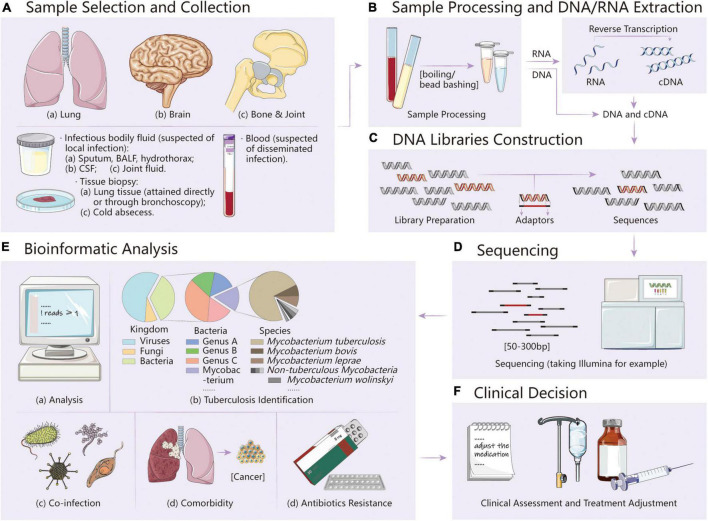FIGURE 1.
(A) Sample selection and collection. Infectious fluids and tissues can be taken under the evaluation of clinicians. (B–D) Experimental procedures (wet lab) of mNGS, mainly including sample processing and DNA/RNA extraction, DNA libraries construction, and sequencing. (E) Bioinformatic analysis (dry lab) of mNGS. With the analysis pipeline modification, it is promising to determine tuberculosis, co-infection, comorbidity, and antibiotics resistance simultaneously. (F) Clinical decision. After obtaining the report, clinical assessment and treatment adjustment can be made promptly.

